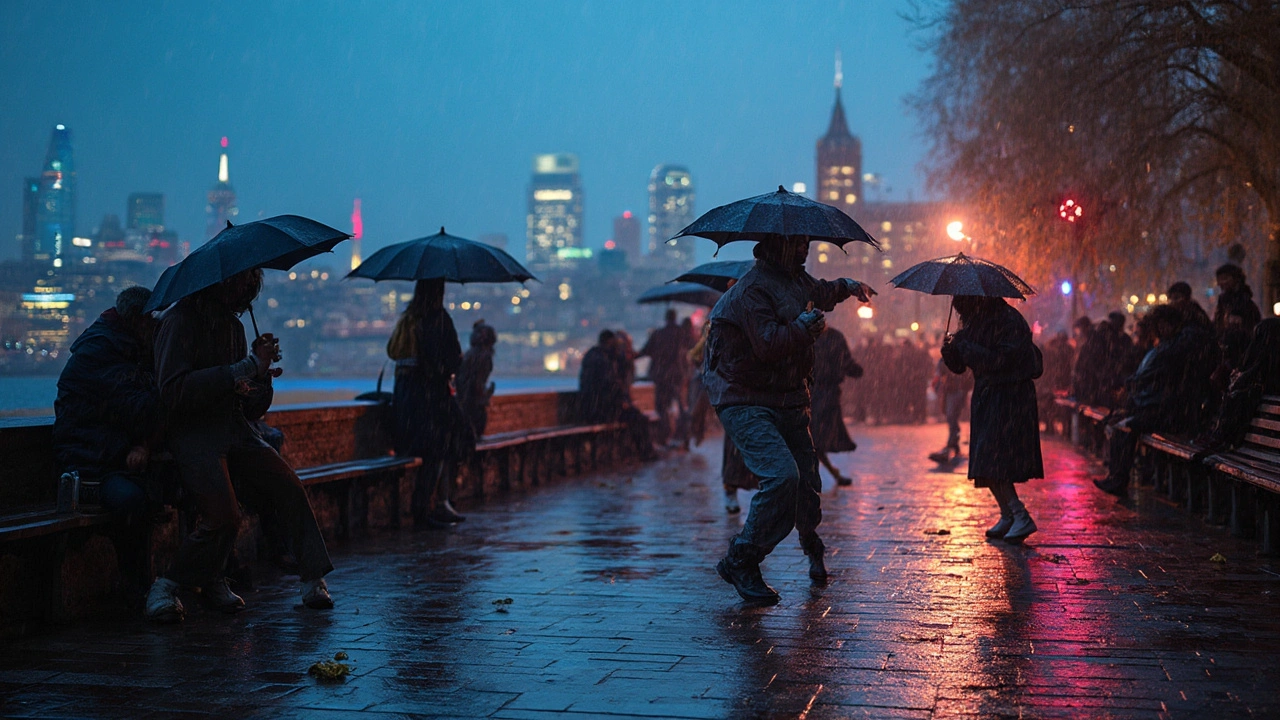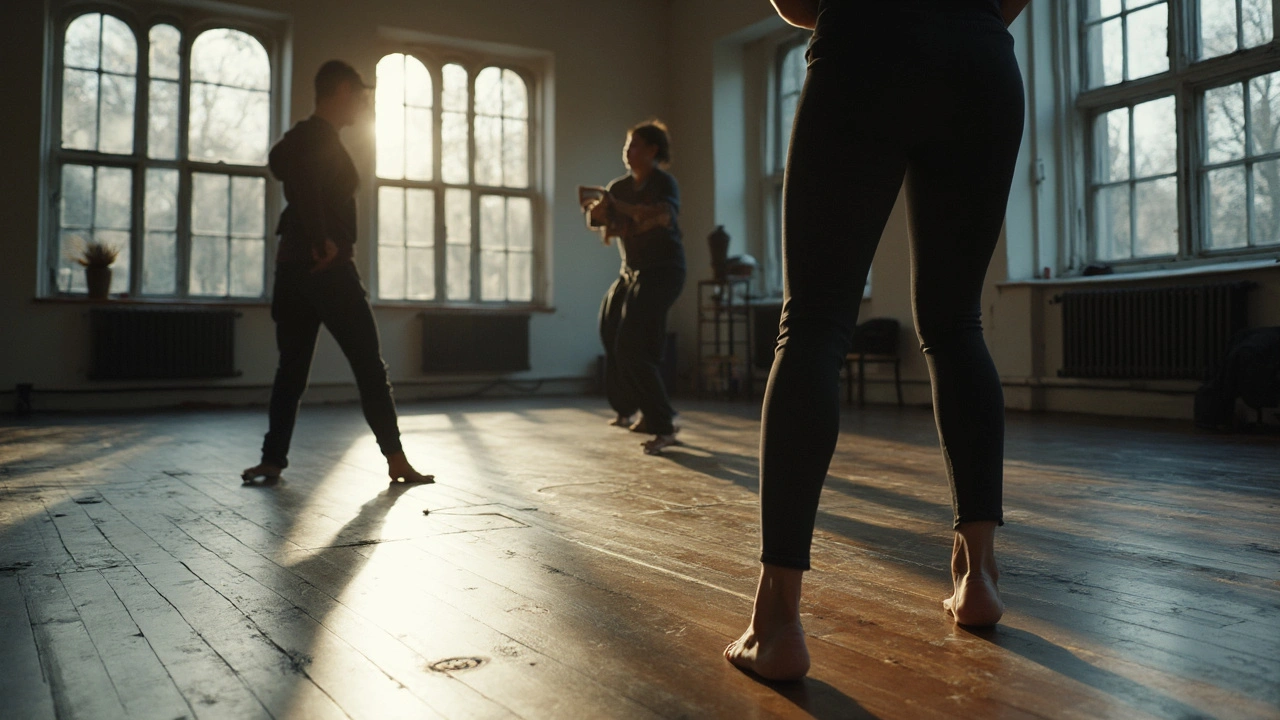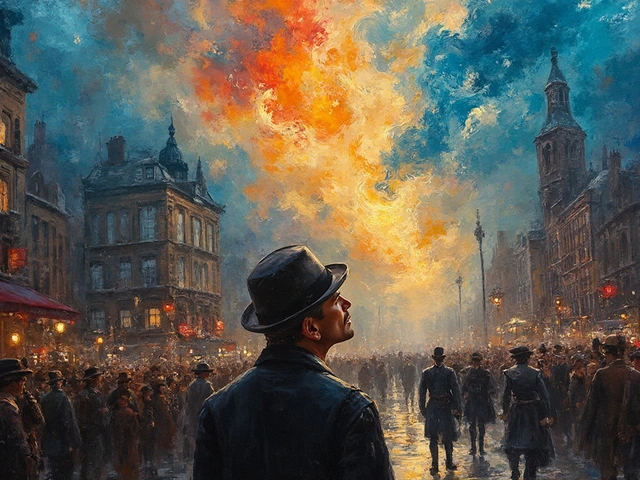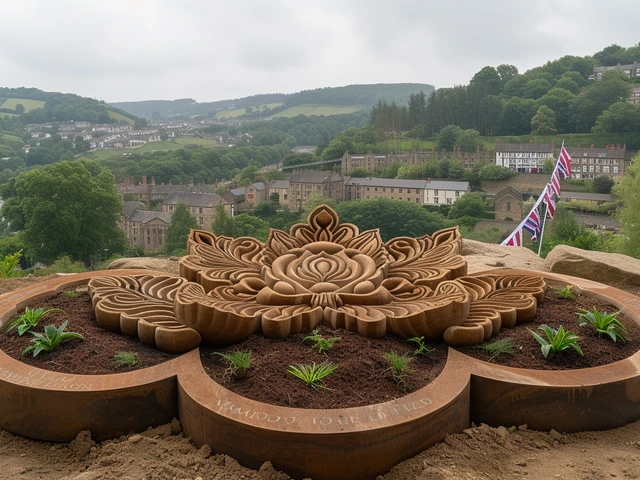Every time a dancer steps onstage barefoot, folds ordinary walking into a phrase, or performs without a single note of music, you’re watching history’s best smuggler at work. Avant-garde creators changed the rules so completely that we barely notice the break anymore-we just call it dance. This piece explains how that happened, what to look for in the work, and how to use the ideas without losing your audience.
TL;DR / Key takeaways
- Avant-garde isn’t a genre; it’s a method of breaking and remaking rules so new forms can exist. Most modern and contemporary styles borrow its tools.
- Think: chance procedures, pedestrian movement, site-specific staging, task-based scores, and non-narrative structures-ideas born on the fringe, later absorbed by big companies.
- To spot it: ask which rules are being bent (music, story, virtuosity, space, roles). To apply it: break one rule at a time, then bridge the audience back with clarity.
- Use the 3M test (Motive, Method, Meaning), the 30-30-40 programming mix, and a one-weird-thing rule to manage artistic risk.
- Examples to study: Rainer’s Trio A, Cunningham’s Events, Bausch’s Tanztheater, Forsythe’s task-based work, street/club pipelines like voguing and krump.
What “avant-garde” really did to dance (and why it’s the unsung hero)
Avant-garde creators tested dance in places where failure was cheap-church basements, lofts, black-box studios-and then their discoveries slipped into mainstream theaters. That pipeline is why you can watch a major company perform a piece built from walking, stillness, and silence, and not bat an eye. The unsung part? The experiments that made those choices legible happened long before the gala crowd arrived.
Let’s pin down terms first. Modern dance fractured ballet’s strict codes in the early 20th century (think Isadora Duncan, Martha Graham). Postmodern dance in the 1960s questioned modern dance itself (Judson Dance Theater). “Avant-garde” isn’t a period label. It’s the recurring impulse to test limits-of form, content, venue, hierarchy-and to keep what works. It’s a toolbox, not a team jersey.
Dance historians like Susan Leigh Foster and Sally Banes have written at length about this feedback loop: each wave rejects a norm, then-once its methods prove durable-gets folded back into the norm. Merce Cunningham separated dance from music and story; now non-narrative structure is standard. Yvonne Rainer stripped away spectacle; minimalism is part of the pro kit. Pina Bausch fused theater and dance; dramaturgy is now common practice. Same story across hip hop theater, club styles, and Indigenous contemporary works: what begins as a break becomes a language.
I live in Sydney, and you can see this lineage up close. Sydney Dance Company will premiere a sleek new work with task-based composition inside it. Bangarra threads ancestral knowledge with contemporary technique. Carriageworks presents Performance Space’s Living Room to test wild ideas that later land on main stages. The fringe-to-mainstream bridge is alive here.
| Year | Milestone | Where | Rule broken |
|---|---|---|---|
| 1913 | Rite of Spring premieres | Paris | Harmony and decorum; rhythm as shock |
| 1952 | Merce Cunningham’s early Events | Black Mountain College | Dance independent of music and narrative |
| 1962-64 | Judson Dance Theater | New York | Pedestrian movement, tasks, non-virtuosity |
| 1978 | Pina Bausch’s Tanztheater | Wuppertal | Blurring drama and dance; raw emotion as form |
| 1990 | Voguing enters pop mainstream | NYC → global | Club/battle aesthetics on big stages |
| 2000 | Forsythe’s task-systems go viral among pros | EU/US | Decentering step vocab; rule-based generation |
| 2020 | Lockdown screen-native choreography | Global | Camera as partner; space redefined |
Notice the pattern. Each milestone installs a new “permission”: you can disconnect dance from music; you can use walking; you can stage dance in a museum; you can build phrases from rules instead of steps; you can move the action to the camera. Those permissions are the avant-garde’s quiet gifts.
Step-by-step: trace (and apply) avant-garde influence to any piece
Use this simple path to read what you’re seeing-or to build your own work without getting lost.
- Start with the broken rule. Ask: Which convention is being bent? Common targets: narrative, virtuosity, gender roles, music dependence, clear front, stage/seat divide, duration. Label it in one sentence.
- Name the method. What tool is doing the bending? Chance procedures, task-based scores, pedestrian movement, contact improvisation, site-specific staging, looping, durational practice, voice and breath as score.
- Map the lineage. Connect it to a known branch: Cunningham (independence of elements), Judson (tasks/pedestrian), Bausch (theatrical dramaturgy), Forsythe (rule systems), club/ball culture (fashioning identity as technique), Indigenous contemporary (kinesthetic knowledge in ceremony).
- Check the motive. Why break this rule here? A clear motive stops experimentation from becoming random. If you can’t say the motive in 12 words, the idea may need sharpening.
- Bridge the audience. Offer one handhold: a motif, a clear spatial idea, a recurring image, or a short program note that points the eye without explaining the magic.
- Stress-test and trim. Try a 10-minute version. Remove one element and see if the core still holds. Keep only what changes the viewer’s attention.
Rules of thumb that save pain:
- The 3M Test: Motive (why this rule), Method (what tool), Meaning (what changes for a viewer). If one M is mushy, fix that first.
- One Weird Thing Rule: break one major rule per piece or per section. Stack too many and you blur the signal.
- 70-20-10 Time Split: 70% rehearsal on the core idea, 20% on transitions, 10% on polish. In experimental work, transitions are where clarity dies.
- Audience Bridge: open with 60 seconds that are legible-clear rhythm, repeated shape, or direct eye contact-then go roaming.
- Risk Dial: Red (alienating), Amber (stretchy), Green (familiar). Place each choice on the dial. Keep the overall dial in Amber for mixed audiences.
Programming heuristics that work for presenters, especially in cities like Sydney with diverse audiences:
- 30-30-40 Mix: 30% boundary-pushing, 30% hybrid crowd-pleasers, 40% recognisable titles. This steadies ticket sales without dulling the season.
- Prototype Nights: show 10-minute works-in-progress to members. You’ll get feedback, reduce premiere risk, and build loyalty.
- Context Cards: one paragraph with three cues: “Watch the floor pattern,” “Listen for the breath,” “Notice who initiates touch.” It steers attention without spoilers.

Examples and case studies you can actually use
Here’s a compact watchlist, with why each piece matters and how its ideas travel. Many clips and reconstructions are easy to find in books, archives, or company reels.
- Yvonne Rainer - Trio A (1966). No big finish, no music, no display of virtuosity. Pure, continuous phrase. Use it to study minimalism and attention without spectacle. In class, set a rule: compose 64 counts without accents or repeats.
- Merce Cunningham - RainForest (1968) and Events. Dance proceeds beside the music, not with it. Objects on stage (Warhol’s Silver Clouds) act like weather. Try this: rehearse your phrase to silence, then layer a soundscape at the end. Don’t chase hits; maintain your internal rhythm.
- Judson lineage - task-based scores. Trisha Brown’s “accumulation,” Steve Paxton’s contact improvisation. Teach a simple object task (tie a knot, lift a chair) and expand it across space and time. Watch how meaning arrives without pantomime.
- Pina Bausch - Café Müller (1978). Repetition, collision, and tenderness create a visceral dramaturgy. Borrow the idea of a recurring interruption (chairs, doors) to structure emotion without narrating a plot.
- William Forsythe - One Flat Thing, reproduced (2000). Tables define space; cues pass like signals in a network. Excellent for learning rule-based composition. Set “if/then” triggers between dancers to build complexity without chaos.
- Ohad Naharin - Minus 16 (1999). Gaga’s sensory focus frees range and nuance; audience interaction becomes composition. Use sensory prompts (“thick elbows,” “hollow knees”) to unlock new textures without adding steps.
- Club/ballroom pipelines - Voguing, Krump. Born in battles and balls, later framed on proscenium stages. Study how framing, not just steps, carries the power. Invite local practitioners to set the rules of the room.
- Sydney touchstones - Rafael Bonachela’s ab [intra] (2018) at Sydney Dance Company; Lucy Guerin’s Split (2017); Chunky Move’s Mortal Engine (2008); Bangarra’s Terrain (2012). Each folds experimental methods-rule systems, durational scoring, light as partner, cultural knowledge-into works that reach broad audiences.
“No to spectacle. No to virtuosity. No to transformations and magic and make-believe. No to the glamor and transcendency of the star image.” - Yvonne Rainer, “No Manifesto” (1965)
That negative list wasn’t a grumpy mood; it was a precise tool. By subtracting default habits, Rainer made space for a different kind of seeing. You don’t need to keep the “No” forever. You use it to reset your eye, then add back only what you truly need.
Two modern traps to avoid:
- Shock-for-shock’s-sake. If the only note is “I can’t believe they did that,” the piece won’t last. The avant-garde’s best work ages well because the methods (not the stunts) are strong.
- Instagram illusion. A 15-second loop of a “weird” trick can look avant-garde, but it isn’t a method. Build rules that generate five minutes of attention, then share a short clip if you like.
Cheat-sheets and checklists you’ll actually use
Keep these close when you’re making, teaching, or presenting work.
For choreographers
- Purpose line: “I’m breaking [rule] to reveal [experience].” Tape it to the wall.
- Tool pick: choose one from each bucket-Space (site-specific, circular front, moving audience), Time (loop, cumulative phrase, durational), Body (pedestrian, task, contact), Sound (silence, field recordings, text).
- Audience bridge: one motif, one repeat, one stillness. Place all three in the first third.
- Rehearsal safety: if trying contact or durational fatigue, add a clear stop word, check-in breaks, and hydration cue. Artistic risk ≠ physical risk.
- Editing test: remove your favourite moment. If the piece improves, it wasn’t the spine.
For teachers
- Weekly cycle: Mon (observe), Wed (generate by rule), Fri (compose and show).
- Score examples: “Every time you hear breath, invert a joint,” “Travel only on diagonals,” “Touch the floor only with hands.”
- Critique frame: describe (what happened), interpret (what it did to attention), evaluate (what to change). Keep 2:1:1 talk-to-move ratio.
- Access: provide seated or low-impact variants for task scores. Avant-garde methods adapt well.
For presenters/programmers
- Season mix: 30-30-40 (boundary/hybrid/familiar). Place the riskiest works near deeper engagement programs.
- Context tools: pre-show 5-minute artist intro; post-show 20-minute Q&A with two questions primed (“What rule did you bend?” “What should we watch for?”).
- Community link: pair experimental shows with workshops by local artists (e.g., at Carriageworks or in partnership with tertiary dance programs).
- Contract clarity: document light/sound flexibility early; many experimental works need late seating or nontraditional layouts.
For writers/critics
- Open with the rule broken; readers grasp stakes faster than with plot summaries.
- Credit lineages: Judson, Cunningham, Tanztheater, club cultures, Indigenous contemporary. Context isn’t name-dropping; it’s mapping.
- Describe attention, not opinions: what you looked at, when your focus shifted, what the method did to time.
Want one fast doorway into the field? Read short primary sources. Merce Cunningham’s statements on chance, Rainer’s No Manifesto, Pina Bausch interviews on repetition and emotion. They’re short, specific, and immediately useful in the studio.
FAQ, next steps, and troubleshooting
Mini-FAQ
- Is avant-garde just shock value? No. Shock fades quickly. Methods last. The durable contributions are tools-chance, task, non-narrative structures-not stunts.
- How is “experimental” different? “Experimental” is a process claim (“we tried things to see what works”). “Avant-garde” is a stance that keeps pushing at the edge. A piece can be both.
- Can kids or beginners learn this? Yes. Task scores and pedestrian movement are beginner-friendly. Keep rules simple and make safety explicit.
- Will funders support risky work? Often, if you show process and audience care. Many arts councils, including the Australia Council for the Arts, value innovation when paired with access and impact plans.
- Where can I see it in Sydney? Watch programs at Carriageworks, Sydney Dance Company, Performance Space’s Liveworks, and independent showings in studios. You’ll catch works in progress and polished premieres.
- What should I read? Sally Banes’ “Terpsichore in Sneakers,” “The Oxford Handbook of Dance and Theater,” and interviews with Merce Cunningham and Pina Bausch.
Next steps
- For choreographers: This week, make a 3-minute piece using one tool (task-based or chance). Show it to three people. Ask only: “Where did your attention go?” Iterate once.
- For teachers: Add a 10-minute rule-based composition lab to your next class. Document three scores that worked and one that didn’t. Keep the scores; they become a reusable deck.
- For presenters: Pilot a 60-minute work-in-progress night with three artists. Cap at 25 minutes each, 10 minutes Q&A. Track attendance and repeat quarterly.
- For audiences: At your next show, write down the first rule you think the work is breaking. Use that lens for the first five minutes before judging anything else.
Troubleshooting
- My audience walked out. You likely stacked too many unfamiliar elements. Next time, keep the big break, but add a motif and a rhythmic anchor in the opening.
- My dancers feel unsafe with contact/weight-sharing. Bring in a qualified contact teacher, set clear consent protocols, and scaffold risk. Artistic pressure is never a substitute for training.
- The work feels aimless. Tighten the rule. “Do something weird” isn’t a score. “Only pivot on heels; change direction when you exhale” is.
- The idea dies once we add music. Rehearse in silence until the phrase holds its own. Then treat music as an environment, not a metronome.
- The presenter wants cuts I don’t agree with. Offer two versions (festival edit and full). Protect the core method; compromise on duration and transitions.
If you take nothing else, take this: the point of avant-garde dance isn’t to confuse people. It’s to show us a way of moving-and seeing-we didn’t know we could have. Break one rule with care, build the bridge back, and you’ll feel the engine that has been quietly pushing dance forward for more than a century.




